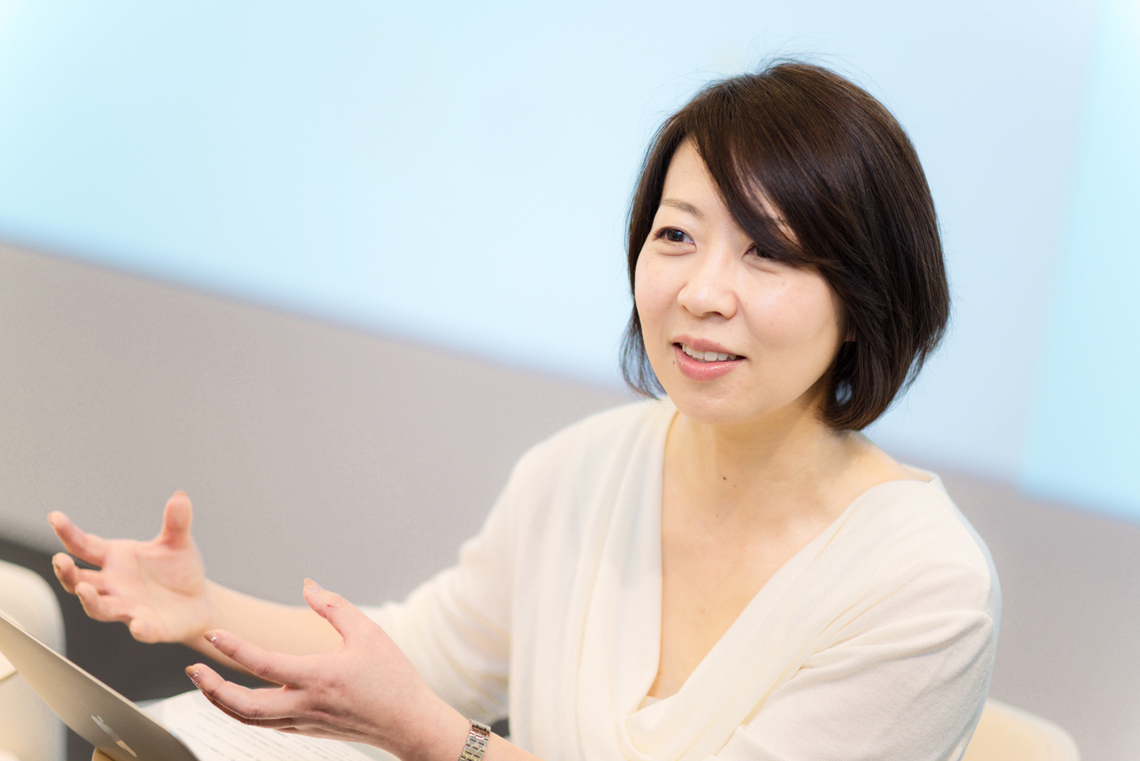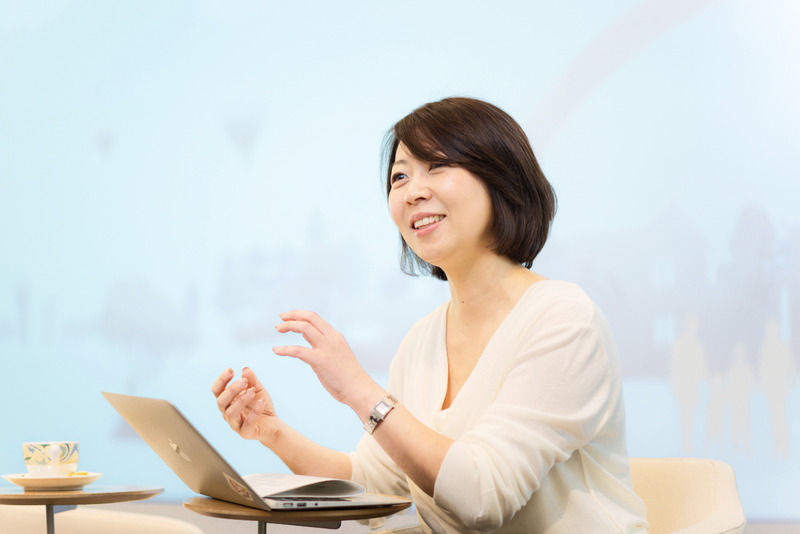The Open Innovation Lab (InnoLab) at Dentsu Inc. International Information Services, Inc. (ISID) is also tackling educational reform through ICT. For the seventh installment of this series, we interviewed Senior Consultant Akie Sekijima, who is also a mother of two. She spoke extensively about the potential of Education × ICT.

Leveraging ICT to create vibrant learning environments for children
――What kind of work do you do at Inolab, Ms. Sekijima?
Sekijima: I develop ICT-based education-related business initiatives. It all started four years ago. It began when I submitted a proposal related to ICT education to our company's internal business planning program. Back then, devices like smartphones and tablets were hardly used at home, and many people were resistant to bringing IT into the educational setting. However, looking at society as a whole, email was commonplace, and gathering information online was standard. Raising two children, I constantly felt stressed by this "disconnect in ICT usage" between the educational setting, starting with the home, and society at large.
This disconnect became starkly apparent when my children reached upper elementary school. As they entered their rebellious phase, school notices often failed to reach us, and assignments piled up. We'd finally see the notices at night, forcing us to rush to the late-night supermarket for last-minute supplies. After a late dinner, homework time began, but the children were often too sleepy, and the parents, exhausted, would end up speaking harshly. The children, in turn, would frequently be scolded by parents or teachers for late homework or assignments. Simply having a website or email that quickly notified us about tomorrow's items, urgent contacts, or daily events would have made parenting so much easier and provided plenty of conversation topics, preventing this vicious cycle.
By upper elementary grades, cram school attendance becomes more serious. However, placement tests and class assignments are typically determined by the average score across multiple subjects, regardless of whether the child actually understands the material. Few cram schools place students in higher classes for their strong subjects and lower classes for their weak ones. This often forces them to repeatedly study material they already understand well. Conversely, they don't get enough help with the parts they don't understand. As a result, instead of feeling the joy of learning, their days become filled with anxiety over mock test scores.
I want to significantly bridge the gap between teachers, students, and parents through simple ICT integration. I aim to create a system where children can visualize their own progress and make objective judgments, fostering an environment where they genuinely experience the joy of learning on their own initiative.
――Specifically, what kind of ideas were you considering?
Sekijima: First, I wanted to return to a school-based education model, similar to how we were raised. The difference from the past is that it wouldn't be a place for uniform study, but one that provides a personalized learning environment for each child. For example, every child has different favorite subjects, challenging units, and study methods. Even within a favorite subject, there might be specific areas they struggle with. We'd let them work through learning content at their own level, step by step, visualize their efforts, and praise them. This approach helps children build a sense of accomplishment and confidence. Furthermore, as we accumulate learning logs from many children, we envisioned that these logs could serve as references, enabling the next generation to take a proactive approach to their studies. For instance, what kind of school should they attend to pursue their dream career? What process and specific studies would be most effective for achieving their goals? If such pathways become visible through the logs of their predecessors, children could learn independently and move toward their dreams.
I hoped that with the power of ICT, we could create a society where children could learn at their own pace and move closer to becoming the adults they aspire to be.

Realizing "Adaptive Learning," a Customized Learning Method, with ICT!
――What exactly does "learning content tailored to each individual child," mentioned earlier, entail?
Sekijima: Think of it as "adaptive learning," or "適応学習" in Japanese.
Until now, the mainstream learning method was, for example, buying a high-level math workbook and relentlessly working through it. However, this approach cannot address individual strengths and weaknesses per unit, such as "I'm good at geometry but extremely weak at calculations." So, why not digitize textbooks, break them down into individual units, and allow purchasing only the necessary parts? If data accumulates on which level and which units were purchased, along with the results of the answers, a clear picture emerges of one's strengths and weaknesses. Then, for the weak areas, one can overcome them by using materials at a lower level or watching explanatory videos to deepen their knowledge. This is "level optimization."
Another essential element for achieving adaptive learning is "optimizing learning methods." Take learning kanji, for example. Traditionally, the main method was simply writing them on paper to memorize. However, there are now various other learning methods, such as writing on tablet devices or using game-like apps. It's not uncommon for students who couldn't memorize them by writing on paper to remember them surprisingly well using an app. Therefore, providing as many methods as possible so students can find their preferred learning style is also essential for delivering ICT education tailored to each individual.
――I see. By implementing both "level optimization" and "learning method optimization," we can create learning experiences tailored to each individual.
Sekijima: Yes. Furthermore, I believe that enabling situation-specific learning differentiation—such as before tests or entrance exams—will allow for the implementation of highly precise adaptive learning. I sincerely hope that many people will challenge themselves to utilize ICT in education, accumulate diverse data, and continue creating better learning environments.
(Continued in Part 8)



